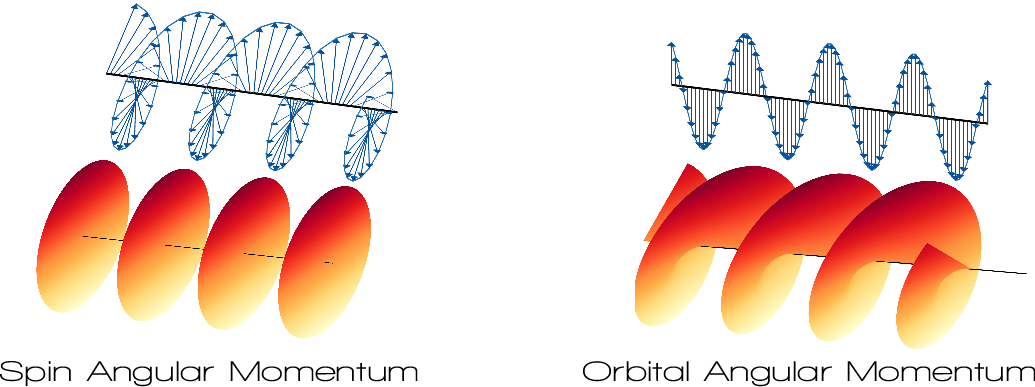XUV studies of light beams carrying angular momentum: Synthesis and exchanges
Photons can have orbital and spin angular momentum quanta (OAM and SAM) [Lavery 2012].
From the earliest discussions [Poynting 1909], SAM has been clearly associated with light polarization and has led to numerous diagnostic methods for chiral matter or matter under magnetic field.
For OAM, the theoretical literature has given only a formal description, far removed from the experimental scope.


Only recently has the link between OAM and light field properties been explicitly established [allen 1992]. In the textbook examples, it corresponds to a spiral wavefront, with polarization remaining linear.
The two types of angular momentum have similarities and differences when interacting with matter, which justifies their joint study.
To date, polarization has been studied mainly in the visible range for its potential application in optical tweezers, quantum entanglement, improved data multiplexing or surface monitoring.
It has also raised a large number of fundamental questions about its link and interaction with regular SAM.
Moreover, when it interacts with matter, it can induce unusual non-linear processes.
These specificities are linked to the laws of conservation of momentum.
However, fundamental tests could only be carried out partially, either because visible light in the IR induces transitions in regions of the spectrum that are generally very crowded, or because the non-linear processes reported remain confined to 3rd order.
In Xstase, we have developed femtosecond to attosecond XUV sources to study the ultra-short interaction of matter with either type of angular momentum.
Project leader: Thierry RUCHON


